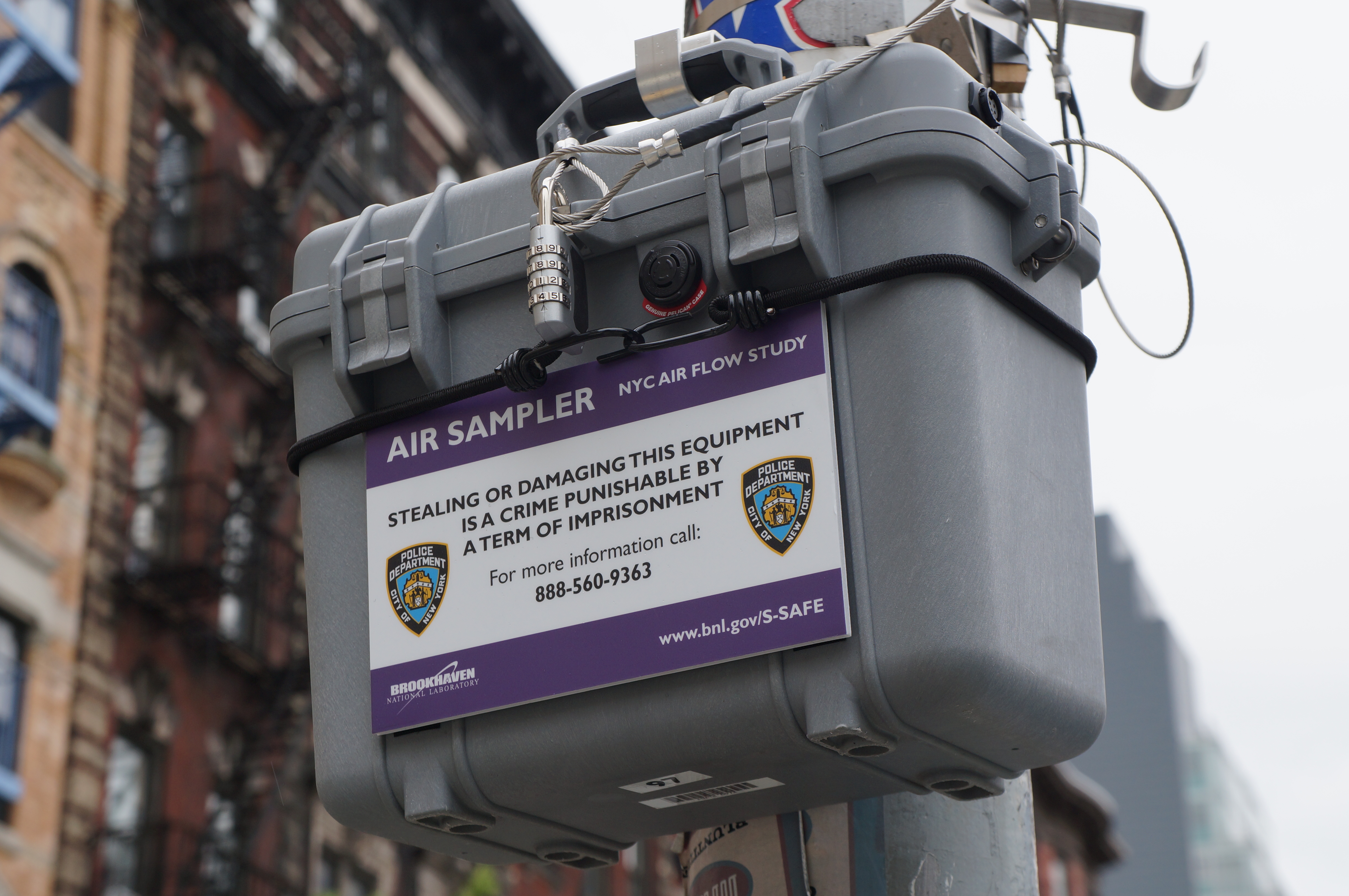NYC Performs Final Subway Airflow Test

NEW YORK CITY — On a street in Manhattan's Lower East Side, an unremarkable gray box protrudes from a telephone pole. Inside the box lies a state-of-the-art airflow-sampling device, one part of an experiment to track how a gas disperses through the city's streets and subway system.
Today, researchers from Brookhaven National Laboratory in Long Island performed the third and final test in the experiment (July 25). The goal of the project is to develop a model for how a dangerous airborne contaminant, such as sarin gas or anthrax, would spread throughout the city in the event of a terrorist attack or accidental release. [What Were the Worst Subway Attacks in History?]
The scientists released tiny amounts of a colorless, nontoxic gas at several locations around the city. The airflow samplers, located at various points throughout the city, measured the gas to determine how fast and how far it spread.
"Once we get all the data, first responders and emergency management people will be able to use the information to make informed decisions on how to best react," said study co-leader Paul Kalb, head of environmental research and technology at Brookhaven.
The study, called the Subway-Surface Air Flow Exchange (S-SAFE) project, will answer questions such as where people should shelter if a contaminant is released and which areas should be evacuated, Kalb told LiveScience.
The gas used in the study is a nontoxic substance called a perfluorocarbon tracer (PFT). These gases are commonly used in airflow and pollution studies, as well as in medical settings. Hoax fliers posted online and in the subways claimed that the PFTs being released were dangerous. While other chemicals in the perfluorocarbon family may be harmful to human health, the ones used in the study are completely inert, Kalb said, meaning they don't react with other molecules, including the ones that make up human bodies.
Most of the air sampling happens automatically, but Kalb, dressed in a neon-yellow safety vest, was on-scene to monitor the experiment's progress. Just this morning, one of the sampling boxes went offline. It turned out the box had been knocked off of an electric pole, probably due to a car accident, Kalb said.
Get the world’s most fascinating discoveries delivered straight to your inbox.
The results of the airflow tests will remain confidential, however. "We absolutely don't want to provide useful information to potential terrorists on how to best poison New York," Kalb warned.
Airflow can be affected by several factors, primarily wind speed and direction. The tests had to be performed on days with average winds; otherwise the tiny quantities of tracer would dissipate before the samplers could detect them. Today's unseasonably cool, slightly rainy weather met the researchers' criteria.
Brookhaven conducted an airflow study in New York in 2005, but this did not include the subway system. Other studies have been conducted in the subways of Boston, Washington, D.C., and London.
Follow Tanya Lewis on Twitter and Google+. Follow us @livescience, Facebook & Google+. Original article on LiveScience.com.



